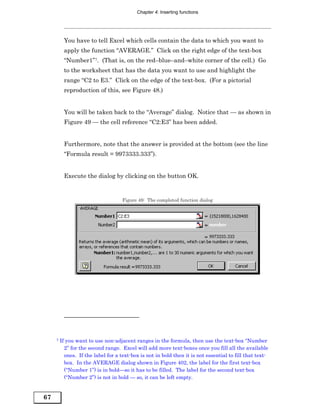

Figure C Apply a simple filter to summarize data. At this point, you have a detailed summary of activity for November 12, but you can go a step further by using AutoSum (#3), which is smart enough to recognize the active filter and substitute the SUBTOTAL() function. For instance, the filter in Figure C is the date November 12, which displays a subset of five records. With the filter in place, display a subset. In Excel 2003, choose Filter from the Data menu and then select AutoFilter.

Figure A shows the summarized values for November 12 in the Status bar. Sometimes, all you need is a little selection power after sorting the data, select a subset. It’ll mean the difference between valid data and a mess. In lieu of automation, be sure users are well trained and aware of this detail. When creating workbook applications for others, automate any required sort process if possible. If users don’t know that, the resulting analysis will be incorrect. More important, many summarizing tasks require sorted data. The easiest way to summarize data is to start with a simple sort if all you need is a quick glance at ordered data. LEARN MORE: Office 365 Consumer pricing and features 1: Sort
#DATA ANALYSIS WITH EXCEL 2003 DOWNLOAD#
Note: You can download a demo spreadsheet that illustrates these examples. These summarizing tips will help you put Excel‘s summarizing features and functions to work for you. Number crunching is Excel’s forte, so when you’re ready to move beyond the basic summarizing aggregates, such as SUM() and AVERAGE(), you’ll find a lot of power and flexibility at your disposal. 2018 while this program might look a little different, the steps shown in this tutorial are the same. 2012 and the video tutorial for this article published Dec.
#DATA ANALYSIS WITH EXCEL 2003 HOW TO#
You will learn how to generate multiple documents automatically with customization, create and use your own templates and use of macros to do repeated task automatically.Īnd at last Chapter ‘Get help for your problem’ lists few problem statements and their probable solutions with references to the Excel feature or functionality that can be used to resolve the problem.Editor’s Note: This article was originally published in Sept. In the end, Chapters ‘Mail Merge using Excel’, ‘Create Custom Excel Template’ and ‘Macros in Excel’ explain the Excel features that help in automating tasks. In the intermediate section, you will learn ‘Get creative with Icons, 3D models, Digital Inking’ details multiple new and improved features that got introduced to enhance the visual presentation. Further ‘Data Visualization with new Charts types’, ‘Gantt and Milestone chart’, ‘SmartArt and Organization Chart’ give details on the different chart types available in Excel. Then ‘Formulas and Functions’ gives an initial understanding of what are operators, formulas, functions, their components. It starts with ‘Getting Started with Excel’ and ‘Performing functions with shortcut keys’ which will help you in getting started with Excel.

Book explains and simplify the usage of Excel features and functionalities, with the help of examples.


 0 kommentar(er)
0 kommentar(er)
